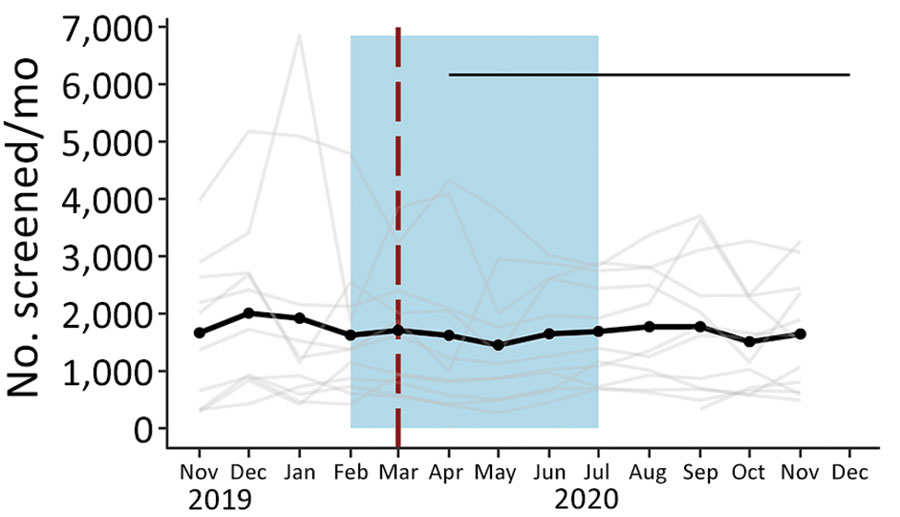Volume 28, Supplement—December 2022
SUPPLEMENT ISSUE
Clinical
Outcomes after Acute Malnutrition Program Adaptations to COVID-19, Uganda, Ethiopia, and Somalia
Figure 4

Figure 4. Total screened in community management of acute malnutrition facility outpatient therapeutic programs, Somalia, November 2019–December 2020. Black dots and line indicate the mean values across all facilities. The gray line indicates the raw values for each facility. Red vertical dashed lines indicate date program adaptations began. Black horizontal line indicates dates that COVID-19 restrictions were in place. Blue shading indicates lean seasons. COVID-19 restrictions in place refers to COVID-19 mitigation policies that restrict movement (e.g., restrictions on transportation, lockdowns, and curfews). Lean seasons refer to months of increased food insecurity.
Page created: May 27, 2022
Page updated: December 11, 2022
Page reviewed: December 11, 2022
The conclusions, findings, and opinions expressed by authors contributing to this journal do not necessarily reflect the official position of the U.S. Department of Health and Human Services, the Public Health Service, the Centers for Disease Control and Prevention, or the authors' affiliated institutions. Use of trade names is for identification only and does not imply endorsement by any of the groups named above.